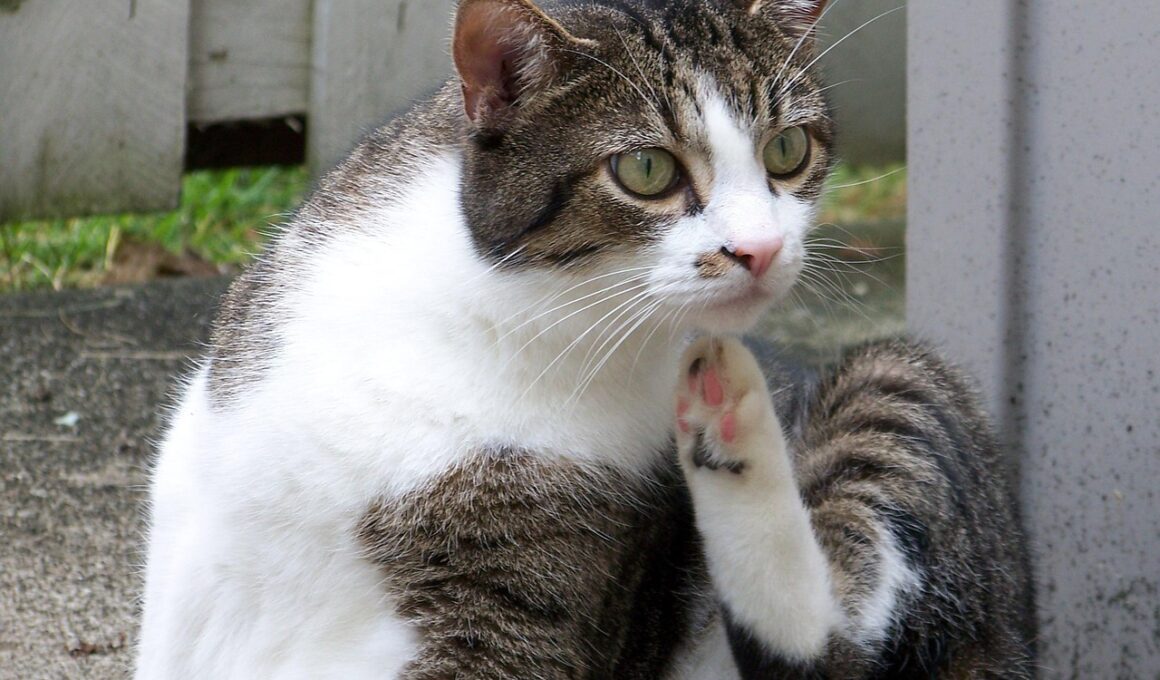Understanding Why Cats Scratch Furniture and How to Stop It
Cats are fascinating creatures with diverse behaviors often driven by natural instincts. One of the most common issues faced by cat owners is furniture scratching, a behavior that can be both frustrating and damaging. Understanding why cats engage in this activity is essential for devising effective solutions. Scratching is a natural behavior for cats; it helps them sharpen their claws, mark territory, and stretch their muscles. Cats have scent glands in their paws, and scratching allows them to deposit their scent as a means of marking their territory. By recognizing that this behavior is instinctual, cat owners can feel less frustrated and more empowered to address the issue effectively. Behavior modification techniques are critical in curbing unwanted scratching. Without understanding the reason behind their scratching, many owners resort to punishments that may not resolve the issue. Instead, redirecting their energy towards appropriate scratching surfaces, such as scratching posts, can lead to successful outcomes while satisfying the cat’s needs. Providing positive reinforcement will encourage cats to use these designated areas, helping to preserve your furniture while keeping your feline friends happy.
Identifying the Right Scratching Solutions
To successfully manage a cat’s scratching habits, one must identify suitable alternatives. There is an array of scratching posts and pads available in the market, designed to cater to various scratching preferences of cats. Cats tend to scratch vertically or horizontally depending on their individual instincts; therefore, offering a variety of scratching surfaces ensures that there’s a perfect option for all feline personalities. Posts that mimic tree trunks may attract those who appreciate vertical stretches while flat pads work well for those who prefer horizontal surfaces. Evaluate your cat’s preferences by monitoring their scratching habits and selecting several options to test. Another consideration is the material of scratching posts. Sisal, carpet, cardboard, and wood can all provide different feelings under a cat’s claws, so experimenting with these materials can help to find a satisfying option for your pet. Additionally, placing scratching posts in areas where your cat spends time can promote their use. Cats will be more inclined to scratch when the posts are conveniently located near their favorite lounging spots, thus enhancing their comfort and use of the post.
Incentivizing the use of scratching posts is a key aspect of successful training. It’s important to create a rewarding experience for your cat when they choose to use the scratching post instead of your furniture. Utilize treats, praise, and toys as rewards when your cat approaches or scratches the designated areas. This positive reinforcement will help build a strong association between the scratching post and pleasurable experiences, encouraging repeated behavior. To further entice your cat, consider using catnip to attract their attention to the scratching post. By rubbing catnip on the scratching post or using a catnip spray, you’re likely to enhance their interest and stimulate their natural instincts. If your cat initially seems disinterested, patience is vital. Gradually, through consistent reinforcement and encouragement, your cat will learn to see the scratching post as their primary outlet for such behavior. It’s also crucial to limit their access to furniture that you don’t want them to scratch since this can decrease temptations while they are learning. Understanding your cat’s needs helps ensure they feel secure in their environment while minimizing damage to your home.
Understanding and Prevention
Preventing scratching on furniture begins with understanding your cat’s environment. Cats are territorial creatures and may scratch more if they feel stressed or threatened. Ensure that your cat has a safe and comfortable environment, which includes providing ample opportunities for play and exercise. Interactive toys can help to reduce pent-up energy that might otherwise manifest as destructive scratching behavior. Additionally, keeping their nails trimmed minimizes damage when they do scratch, which can help to mitigate any concerns homeowners face regarding furniture. Regular grooming is another effective way to support your cat’s physical and emotional well-being. Creating an enriched environment with engaging toys, climbing structures, and hiding spots will not only provide a sense of security but also greatly reduce destructive behaviors associated with boredom or anxiety. Pairing these elements with adequate playtime will help channel their natural instincts into fulfilling activities while reducing stress. Regularly engaging with your cat helps build a strong human-animal bond that decreases anxiety-related behaviors. As your cat becomes more connected to their environment, less destructive habits can develop as they feel more secure.
Consider using deterrents if your cat continues to scratch furniture despite attempts to redirect their behavior. Using double-sided tape or adhesive strips on furniture temporarily can discourage scratching as cats dislike the sticky texture. There are also commercial sprays available designed to repel cats from certain surfaces, which may help with training. However, be cautious with any sprays, selecting non-toxic options that are safe for your pets. Consistency is key when employing deterrent methods, with regular monitoring of your cat’s habits. Gradually shifting your cat’s attention to appropriate scratching areas should be done patiently; don’t expect immediate results. If scratching persists, consulting with a veterinarian or a professional animal behaviorist can provide personalized strategies that suit your cat’s needs. Understanding your cat’s behavior not only helps in curbing unwanted scratching but also contributes to their overall mental health. Addressing underlying issues contributing to scratching provides insight into their emotional state and ensures they feel secure within their environment. This understanding fosters a better relationship between feline companions and their human guardians.
The Role of Environmental Enrichment
Incorporating environmental enrichment into a cat’s life serves as a preventative measure against destructive behavior, including furniture scratching. Providing climbing structures, puzzle feeders, and interactive toys promotes mental and physical stimulation that helps satisfy their natural instincts. Cats are inherently curious creatures, and offering various forms of entertainment can prevent boredom and the resulting destructive behavior. Make use of window perches to enable your cat to watch the outside world, stimulating their minds and keeping them engaged while also contributing to their well-being. Regularly introducing new toys or rotating existing ones can ensure novelty, preventing their interest from waning. Engaging in daily interactive play helps strengthen the bond between you and your cat while providing essential exercise. Enhanced interaction allows for the development of a healthy routine that benefits both parties, leading to reduced anxiety and stress levels. Moreover, socialization is crucial in cat development; spending time with other pets in a controlled setting can enhance their confidence. In turn, this confidence can significantly reduce scratching due to insecurity or stress, as an enriched atmosphere fosters a sense of calm and stability.
Training a cat to stop scratching furniture is a process that requires patience and understanding of feline behavior. It’s essential to remember that scratching is a normal activity for cats, so acceptance and compromise are vital components of a successful strategy. By investing time into identifying your cat’s preferences and redirecting their behavior towards suitable alternatives, you can minimize destructive tendencies. Leverage positive reinforcement techniques, offer diverse scratching surfaces, and ensure their living environment is enriched with interactive play and a secure atmosphere. Be aware that consistency is crucial in any training endeavor, and adjustments may be needed based on your cat’s response. Remember to also take breaks to alleviate frustration when faced with setbacks. Celebrate small victories during training, and continue adapting your methods to find what resonates best with your cat’s needs. Ultimately, forging a healthy balance between respecting your cat’s natural instincts and preserving your furniture will lead to a peaceful coexistence. Every cat has a unique personality, and patience will reward you with a better behavioral understanding, yielding a more harmonious living space for both you and your feline friend.
Remember that every cat responds differently to training methods, relying on a case-by-case approach is vital for successful strategies. Take into consideration your cat’s age, personality, and previous experiences, which can all heavily influence their habits. If your cat has been scratching furniture for years, expect adjustments will take time and don’t rush the process. Interaction with your cat is crucial; spend quality time understanding their likes and dislikes through keen observation. Adopt a flexible attitude throughout the training process; if one method doesn’t work, it’s perfectly acceptable to transition to another. Be kind and gentle when correcting undesirable behavior, building trust and encouraging a bond that reflects positive interaction. In case challenges arise, don’t hesitate to seek out professional help, ensuring tailored solutions that focus on understanding your cat’s unique temperament. Emphasizing connection with your cat not only enriches their experience but greatly enhances your relationship, leading to less stress and frustration for both of you. Keep your home and your cat’s well-being in alignment through understanding and training, providing the ultimate comfort for yourself and your cherished feline friend.


